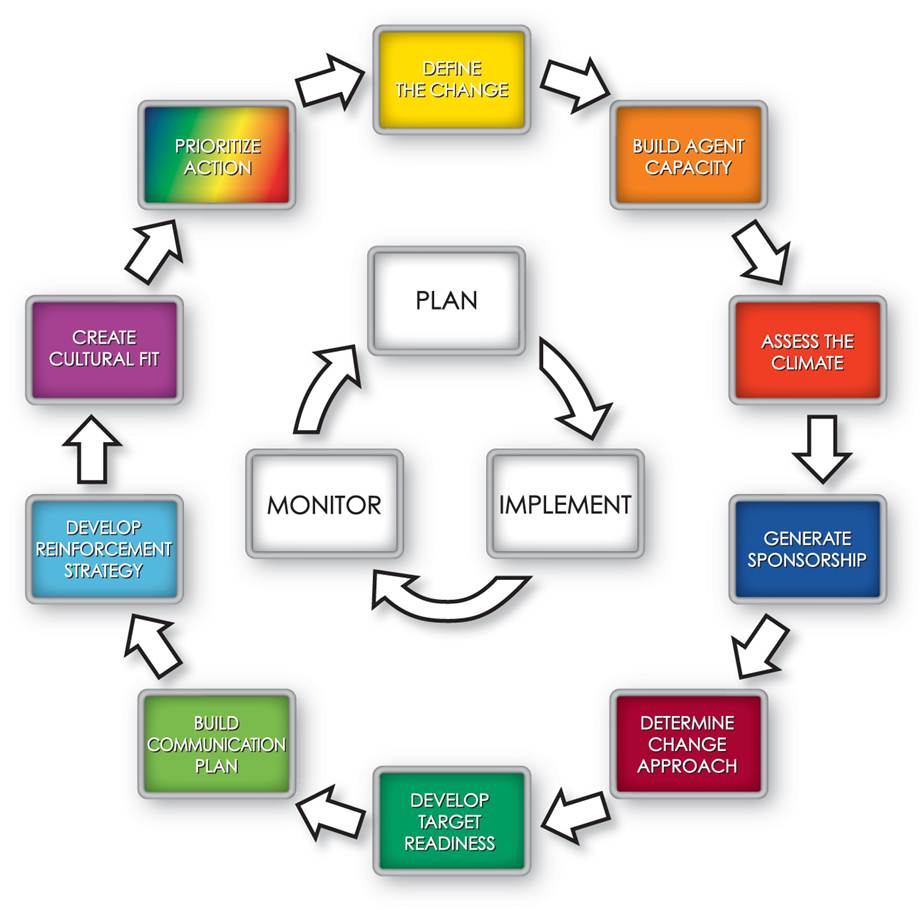Resistance to change is a natural part of the transformation process. But, yet, so often leadership is taken by surprise when they become aware of it. Over the years, we’ve witnessed many “ah ha” moments from our change management consulting clients regarding the resistance they’ve experienced within their own organizations.  To save everyone a lot of time and energy, we’ve compiled the top 5 “knock your socks off” type realizations we’ve encountered, plus a few tips on how to handle these surprising truths.
To save everyone a lot of time and energy, we’ve compiled the top 5 “knock your socks off” type realizations we’ve encountered, plus a few tips on how to handle these surprising truths.
Truth #1 Even when you are making a "positive change" you will encounter resistance.
The fact that you are dealing with a "positive change" has nothing to do with the levels of resistance you will encounter. Instead, the level of resistance is directly linked to the level of disruption created by the change. Not from your Frame of Reference (FOR), but from the FOR of the individual Targets. Remember, FORs are different! What's "positive" to one group is not necessarily positive for another. The on-going challenge is to understand all the Frames of Reference affected by the change.
TIP: Explain the project in a way that demonstrates you understand each Targets’ Frame of Reference. Use different words for different Targets to ensure each group understands the change from their own Frame of Reference.
Truth #2 The greatest resistance to change is usually in the middle to upper levels of management, not from the "front-lines" of the change.
Often, one of the biggest shocks to our clients is that resistance to a transformational change will be greatest in the middle to upper layers of their organization, not at the front lines of the change. While at first glance this is surprising, we have yet to find clients who don't agree this is the case in their own organizations. The AIM (Accelerating Implementation Methodology) principle says "you can expect the highest level of resistance from those people with the greatest interest in things remaining the same." Who are these people? They're the mid to high level management personnel. Why are they resisting? Because it's often these individuals that have the most to "lose" in terms of power and prestige.
TIP: Treat everyone as a Target first. High-level leaders need to have the same two questions answered as any other Target. What's this change mean to me? And what's in it for me?
Truth #3 Resistance to Change is Cumulative
The frustrating truth is that the resistance you encounter today may be due to a change that failed several years ago. In fact, you can find that you are still dealing with resistance years after a project is supposedly complete! Whether leaders recognize it or not, your organization is always learning lessons. For example, the lesson may be "If I resist this change and continue to do my job as I have always done it, this change will go away, too." The truth is …poorly managed implementations often have a long-term, residual impact.
TIP: Make sure you are managing the resistance to the current change in order to ensure implementation success of future projects as well.
Truth #4 Communication alone will not eliminate resistance
The assumption is that if we just tell people about the change, and tell them more often, we will eliminate resistance. But the truth of the matter is you will never eliminate resistance by piling on logical and rational explanations for why the change will be good for people.A sound change management methodology like the Accelerating Implementation Methodology (AIM) certainly includes communication planning-- but if you take a look at the AIM roadmap you will see that communication is only one of the ten elements for managing organizational changes!Bottom-line: A Communication Plan is not an Implementation Plan!  TIP: If you want to get the attention of your Targets, don't use the typical methods of email or even town hall meetings if those are your standard methods of communication. If you are involved in a transformational change even how you deliver your communication must signal that this change is different!
TIP: If you want to get the attention of your Targets, don't use the typical methods of email or even town hall meetings if those are your standard methods of communication. If you are involved in a transformational change even how you deliver your communication must signal that this change is different!
Truth #5 You will never be able to eliminate resistance. Instead, you need to manage it.
You will never combat or overcome resistance to change. Sure it's frustrating, especially when you think your change will make things better for the people who are affected by it. But, if you are looking to drive innovation or transformation into your organization, you should anticipate up-front that you are going to create high levels of disruption, and consequently high levels of resistance to change.
TIP: Involvement leads to higher-level feelings of control! Involve Targets of the change as much and as early as possible to minimize uncertainty.
There you have it… our top 5 truths about Resistance to Change. Did you have any lightbulb moments?


